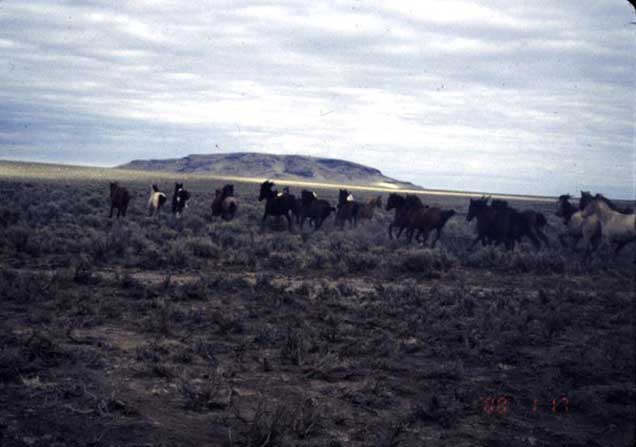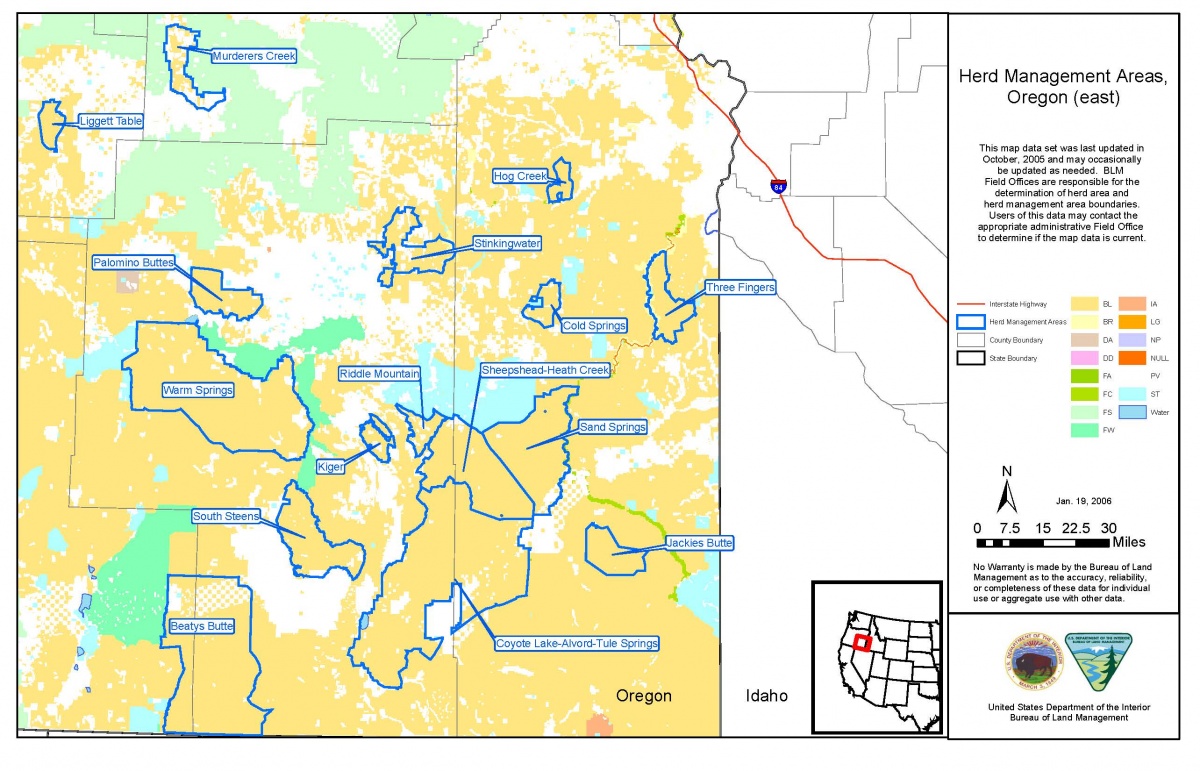
Sand Springs HMA
Historically, this HMA has consisted of a high percentage of pinto and buckskin colored horses that exhibit saddle stock conformation. The herd has been managed to maintain this conformation and color. The Sand Springs horses can and sometimes do, migrate into the adjoining Sheepshead/Heath Creek HMA on the southwest side of highway 78. Herd characteristics are mostly pinto, buckskin, sorrel, bay and brown colors. Adult horses range from 14.2 to 15.2 hands and 1,050 to 1,250 pounds. Genetic analysis of this HMA shows that these horses have the highest genetic similarity with Light Racing and Riding breeds, followed closely by the Old World Iberian breeds.
Location: The herd area is located immediately north of Burns Junction, Oregon. It is bordered on the east by the Owyhee River and Crooked Creek, on the west and south by Oregon State Highway 78, and on the north by the Saddle Butte grazing allotment boundary fence.
Size: 192,524 acres
Topography/Vegetation: Elevation ranges from 3900 to 4500 feet. The topography ranges from gently sloping and rolling lava plateaus to river canyons. The lava flow is a broken surface composed of ridges, hillocks, depressions, and collapsed lava tubes, creating abrupt elevation changes of 15 feet or less. Native vegetation is comprised mostly of big sagebrush, low sagebrush, spiny hop-sage, shad-scale, bottlebrush squirrel tail, blue-bunch wheatgrass, and Sandbergs bluegrass. Several wildfires over the past three decades have created areas where the native vegetation has been lost and replaced by large areas of weed species like cheatgrass and Russian thistle. Precipitation averages 8-10 inches, coming mostly during the winter and spring months in the form of snow or localized summer thunderstorms. The main water sources within the HMA area couple of springs and a pipeline/trough system. Although wild horses have access to the Owyhee River, horses have rarely used the river since the pipeline was constructed.
Wildlife: The area has a wide diversity of wildlife habitats and species. Special status species include greater sage-grouse, California bighorn sheep, spotted bat, and kit fox. Large mammals include pronghorn antelope, mule deer, and elk. Animals typical in the area are coyote, meadowlark, raven, red-tail hawk, American kestrel, prairie falcon, ferruginous hawk, turkey vulture, golden eagle, Peregrine falcon, sharp-shinned hawks, chukar partridge, Hungarian partridges, Northern harrier, mountain lion, bobcat, and rattlesnake. There are numerous other small mammals and migratory birds.
AML: 100-200


